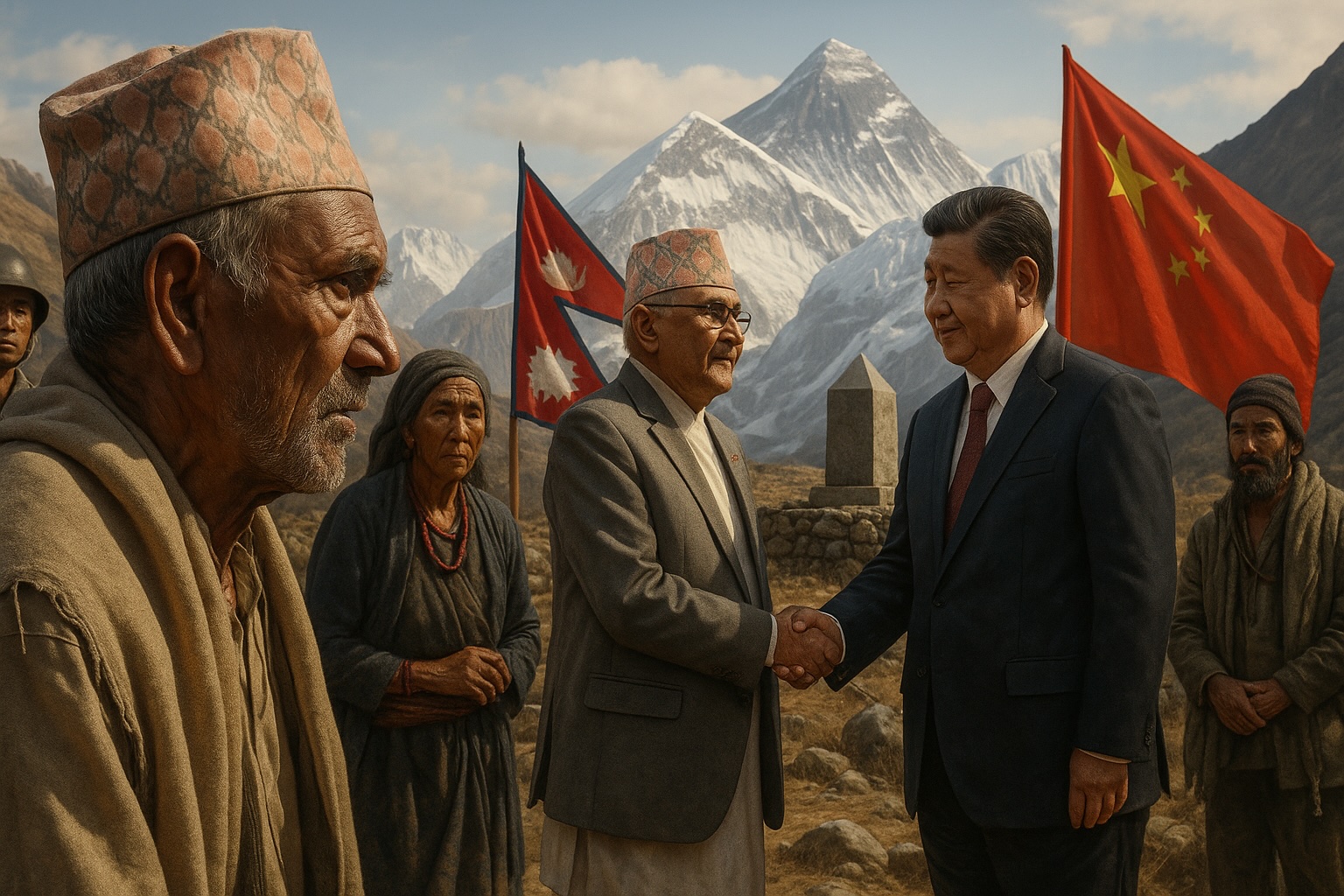Friendship Songs at the Cost of Territory? Prime Minister’s China Visit in Dispute

Prime Minister KP Sharma Oli’s visit to China has once again pushed the long-standing yet sensitive Nepal–China border dispute to the center of heated debate. The relationship between the two countries has not been confined to trade and friendship alone; it is layered with wars, treaties, and recurring border tensions. While Tibet remained independent, disputes were largely limited to trade, but China’s occupation of Tibet in 1950 opened the door to border conflicts. When China published a map in 1960 that included Mount Everest, Nepal’s sovereignty came under international scrutiny. ">Since then, allegations that China has encroached on Nepali land—from Darchula, Humla, Gorkha, Mustang, Dolakha, and Rasuwa to Sindhupalchok and Sankhuwasabha—have repeatedly surfaced. Oli’s current visit has therefore raised expectations for concrete and unambiguous answers on this very issue.
Although the 1961 border treaty and subsequent protocols are formally said to have settled the matter, accounts from border residents and official reports tell a different story. Whether it is the claim that 18 houses in Darchula are under Chinese control, attempts to divert water sources in Humla with fences and canals, new structures around the pillar in Mustang, Rui village of Gorkha falling under China, or the controversy of nearly 100 ropani of land shifting to China after a pillar was relocated in Lapchi, Dolakha—these examples remain alive. Reports by government teams and human rights bodies have been made public, but frustration remains as implementation has not followed. This is why the central question surrounding Oli’s visit is whether border management, mutual respect, and security concerns will be addressed openly.
Politically, the messaging is split into two camps. Those close to the government frame the visit as an opportunity for new cooperation in trade, investment, and infrastructure, insisting sensitive issues will be raised with caution. Critics, however, argue that while Kathmandu enjoys signing agreements, border villagers are losing their land, water, and grazing fields. Their grievance is sharp: “Our lives are getting harder, but the capital only sees photo-ops.”
The Chinese side continues to repeat its consistent position—that the border has been settled under the 1961 treaty, that remaining issues will be resolved through dialogue, and that China respects its neighbor’s sovereignty. In Nepal, however, memories remain vivid of former Prime Minister BP Koirala rejecting China’s “half-and-half Everest” proposal and returning home with only a friendship treaty. Limited results from subsequent inspections have only deepened skepticism.
Oli’s visit now must answer two crucial questions: first, how transparently will the government clarify border disputes through maps, boundary pillars, and public reports; and second, how firmly will new economic or infrastructure deals guarantee respect for Nepal’s borders and protections for border communities. The issue cannot be settled by slogans of “everlasting friendship” alone; until tangible results—secure passage, grazing rights, and livelihoods for border villagers—are seen, the debate will not end. Nepal has no choice but to balance relations with both its northern and southern neighbors, but that balance will now be judged not by speeches, but by the daily realities of its border citizens. As Oli engages with China, the people’s eyes remain fixed on the northern frontier—this time, how much will diplomacy speak, and how much will the border itself answer?
Sharp Power
![From Kathmandu to the World: How Excel Students Are Winning Big [Admission Open]](https://www.nepalaaja.com/img/70194/medium/excel-college-info-eng-nep-2342.jpg)
